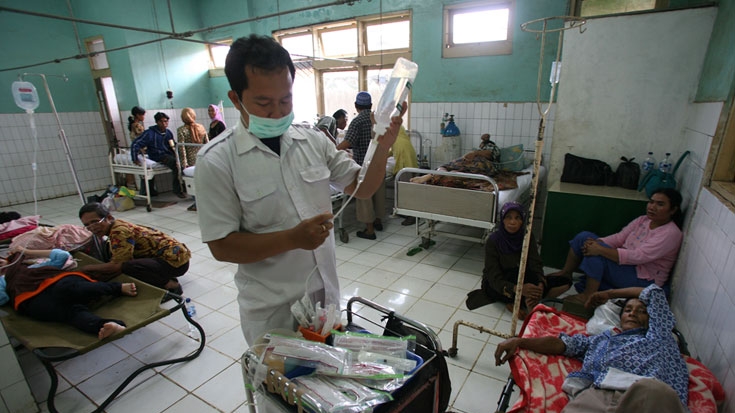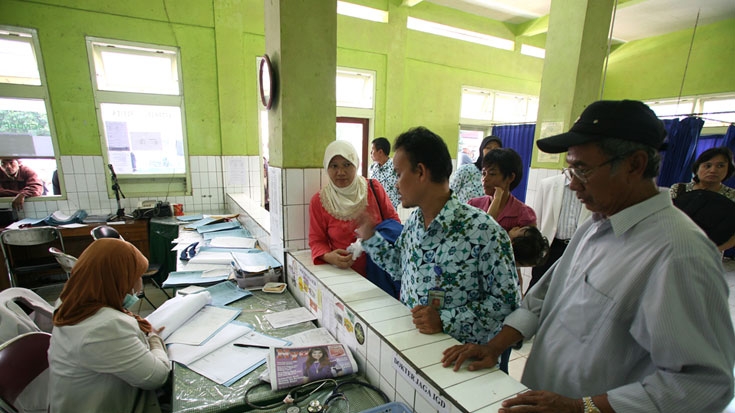Indonesia’s social insurance reform – the ultimate goal being universal health coverage for all by the year 2019 – has come into shape with a single-payer umbrella program in 2014. Jamkesmas – the Government-financed health insurance program for the poor and near-poor – has been integrated and merged with other social insurance programs.
Learning from Jamkesmas may lead to better preparation and implementation of universal health coverage for Indonesia by 2019.
What successes can Jamkesmas claim?
- About 47 percent of poor and near-poor households were covered under the program.
- Outpatient and inpatient utilization rates increased among program cardholders.
- Levels of catastrophic payments declined.
- Participation of private providers increased.
- More than 300 complementary local Jamkesmas-inspired programs were initiated across the country.
Yet considerable challenges remain, including the following:
- Nearly 60 percent of the population remain without any coverage, including millions of Indonesians working in the informal sector.
- Out-of pocket spending remains high even among those with coverage.
- Lack of equitable access to quality health services in rural, remote areas.
- Evidence of considerable mistargeting and leakages to non-poor families.
- Low levels of awareness of benefits.
- Low utilization of health services.
- Regional inconsistencies in the availability of the basic benefits package, and poor accountability and feedback mechanisms.
Key lessons from the implementation of Jamkesmas:
- Improve targeting for poor and near-poor, as more than half of Jamkesmas beneficiaries were not from these groups.
- Improve socialization to increase public awareness.
- Ensure supply-side availability and readiness. The experience of Jamkesmas highlights the significant disconnect between entitlements on paper versus what the system will deliver.
- Ensure sustainability through improving efficiency and effectiveness of implementation. Jamkesmas was entirely financed through central government taxes, and premiums were not based on sound actuarial calculations. Supply-side constraints and supply-side subsidies gave the false impression that financing of Jamkesmas was sufficient, when the reality was that the program did not reimburse the full cost of services and relied heavily on supply-side subsidies.
- Make provider payment mechanisms more results-focused. Under Jamkesmas, payments to providers were basically fee-for-service (including diagnosis-related groups for hospital-based care). At present, there are no additional incentives to improve quality and provider performance. Providers are not given incentives to achieve targets.
- Establish a robust and reliable information system to support monitoring and evaluation, and continuously update the calculation of the program’s costs.
- Learn lessons from selected provinces and districts that have attained universal health coverage, such as Bali, Aceh, and Jakarta. The Government can learn from these regions’ experiences and estimate costs from existing samples.


